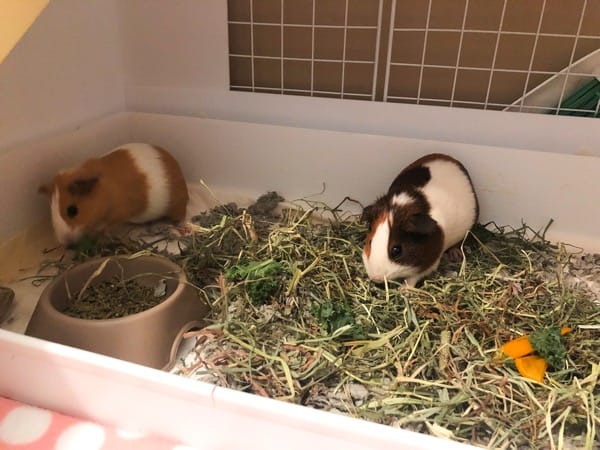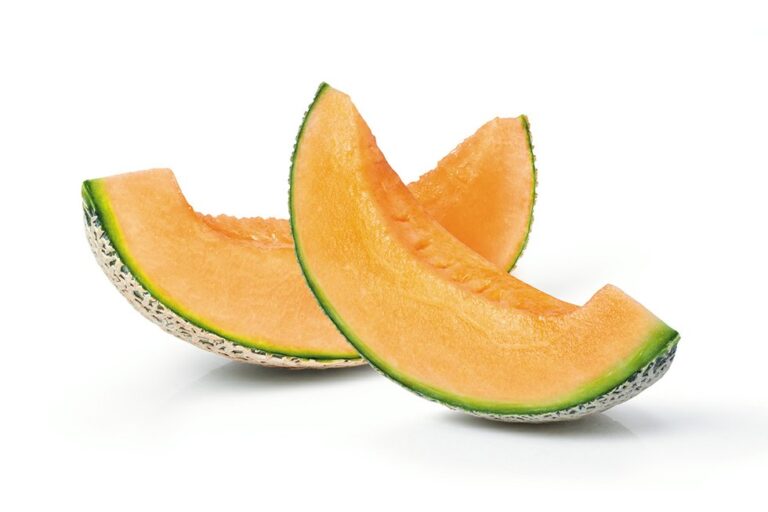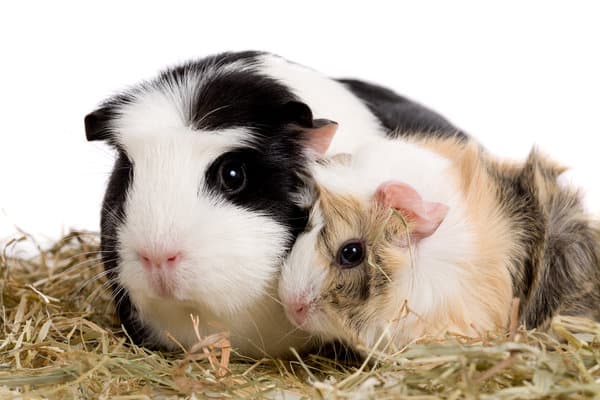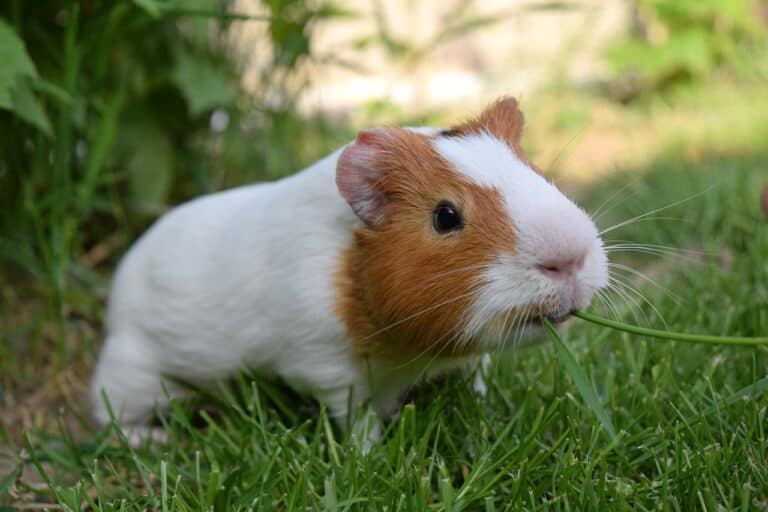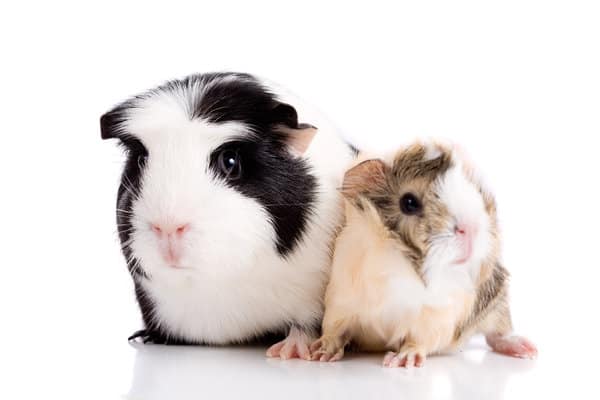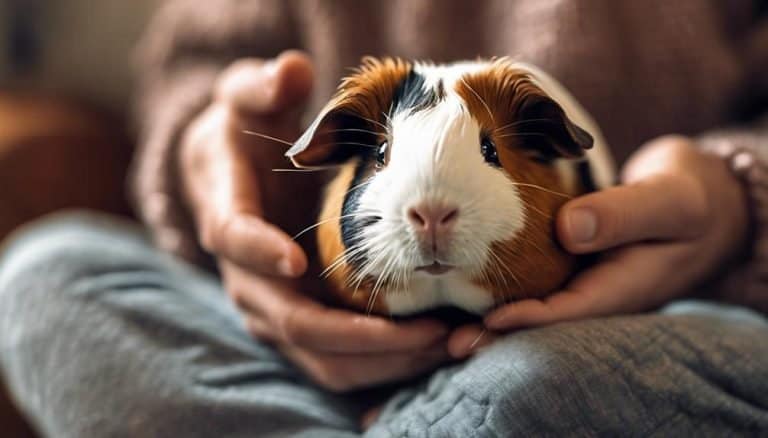How Often Should You Change Your Guinea Pig’s Bedding?
Guinea pigs are adorable and social creatures that make great pets. They require a clean and comfortable living environment to thrive. As an owner, it’s your responsibility to ensure that your guinea pig’s cage is clean and suitable for them.
One aspect of that is choosing the right bedding for your furry friend. In this article, we’ll explore different types of bedding, how often you should change it, and the best practices for maintaining a clean and comfortable living space for your guinea pig.
Why Choosing the Right Bedding for Your Guinea Pig is Important
Choosing the right bedding is crucial for your guinea pig’s health and happiness. A suitable bedding material should be absorbent, safe, and comfortable. It should also mimic their natural habitat and provide the necessary insulation and warmth. A good bedding will absorb any urine and control any offensive odors, allowing your pet to live in a hygienic and healthy environment.
What are the Different Types of Bedding Suitable for Guinea Pigs?
There are various types of bedding available for guinea pigs, such as paper bedding, shavings and fleece liners. Paper bedding absorbs well, but it may not be as comfortable and can cause dust. Shavings can also be absorbent, but they require frequent cleaning, and their dust can be harmful to your pet’s respiratory system. Fleece liners have become a popular option among guinea pig owners as they are easy to maintain and provide comfort, safety and insulation.
How Often Should You Change Your Guinea Pig’s Bedding?
It’s essential to change your guinea pig’s bedding regularly. A dirty cage can result in health problems for your pet and create an unpleasant living environment. The ideal frequency of changing bedding depends on the type of bedding you use, the number of guinea pigs you have, and the size of their cage. A full clean of the cage is recommended every one to two weeks. However, fleece liners require a different approach. Spot cleaning should be done every day, with a full change of the fleece every three to four days. If the bedding looks damp or wet before then, it’s time for a change.
Why Is It Important to Keep Your Guinea Pig’s Cage Clean?
Keeping your guinea pig’s cage clean is essential for their health and comfort. A dirty cage can result in bacterial and fungal infections, skin problems, respiratory issues, and other health problems. It’s also critical to remove any feces, wet bedding, or spoiled food regularly. Guinea pigs tend to eat their hay or food in their bedding, so if the bedding is dirty, they are more likely to get sick.
Using Fleece Liners for Your Guinea Pig’s Cage
What Are Fleece Liners and How Can They Benefit Your Guinea Pig?
Fleece liners are made from a soft synthetic material that is comfortable for your guinea pig to rest on. Using fleece liners has several benefits. They are reusable, washable, and eco-friendly. Unlike other types of bedding, fleece liners can last for years and save you money in the long run. They also reduce the amount of cleaning required for your pet’s cage, making maintenance much more manageable.
How Can You Keep Your Guinea Pig Comfortable and Happy Using Fleece Liners?
Guinea pigs enjoy burrowing and hiding, so fleece liners that have a polar fleece layer on top provide extra cushion and warmth. It’s also essential to provide a separate area for your pet to relieve themselves, such as a litter box. This will ensure that the fleece liner remains dry and odor-free. Placing a bridge or a tunnel adds extra enrichment and mental stimulation for your guinea pig, keeping them happy and active.
What Are the Best Practices for Cleaning and Maintaining Fleece Liners?
One of the advantages of fleece liners is that they are easy to clean and maintain. The best way to clean fleece liners is by washing them in the washing machine on a gentle cycle with white vinegar, which neutralizes any odors. It’s also important to remove any of your guinea pig’s feces and hay before washing the liner. Be sure to dry the fleece liner thoroughly before placing it back in the cage.
Other Types of Bedding for Your Guinea Pig
What Are the Pros and Cons of Using Shaving for Your Guinea Pig’s Bedding?
While shavings can be an effective bedding for guinea pigs, they do have their pros and cons. Shavings come in different sizes, shapes, and types but must be kiln-dried to avoid releasing harmful fumes. While shavings can be absorbent, they are not as soft as fleece liners, require a lot of maintenance, and can cause respiratory problems if not cleaned often.
How Can You Keep Your Guinea Pig’s Cage Clean When Using Absorbent Bedding?
Absorbent bedding requires frequent cleaning to prevent mold, fungal growth and an unpleasant odor. When using absorbent bedding, spot cleaning should be done daily, and full cleaning should be done at least once a week. It’s crucial to remove any damp or wet bedding and replace it with fresh, dry bedding. Apart from cleaning, it’s also essential to ensure that your pet’s cage has proper ventilation to avoid respiratory problems.
What Are the Benefits and Drawbacks of Using Pee Pads for Your Guinea Pig’s Cage?
Pee pads are disposable, easy to use and absorbent. While they can be useful, they can also create extra waste and be expensive in the long run. Additionally, wet pee pads can be slippery, which can be hazardous to your guinea pig’s health. Pee pads can also be chewed or ingested by your pet, leading to health complications. If you choose to use pee pads, it’s essential to change them regularly and check frequently for any signs of wear and tear.
How to Spot Clean Your Guinea Pig’s Cage
What Are the Best Practices for Spot Cleaning Your Guinea Pig’s Bedding?
Spot cleaning involves removing any feces or wet bedding from your guinea pig’s cage regularly. It’s essential to spot clean every day, especially for fleece liners, as they can get damp and promote bacterial growth. You can use gloves and a dustpan or a small vacuum to remove any waste. It’s also important to check your guinea pig’s cage for any signs of dampness or odor that might require a change in bedding.
How Can You Minimize the Smell of Urine in Your Guinea Pig’s Cage?
To minimize the smell of urine in your guinea pig’s cage, you can use absorbent bedding with baking soda or white vinegar to neutralize the odor. It’s essential to spot clean your pet’s cage daily, remove any damp or soiled bedding, and disinfect the cage weekly. You can also provide fresh hay regularly, which will absorb any excess urine and feces, reducing odors and bacteria.
What Are the Signs That You Need to Change Your Guinea Pig’s Bedding?
The signs that you need to change your guinea pig’s bedding can be different depending on the type of bedding you use. If you use absorbent bedding, signs could include dampness, an unpleasant odour, or a discoloured bedding. For fleece liners, signs could include the liner looking or feeling damp, or it having a strange smell.
Conclusion
How Can You Keep Your Guinea Pig’s Cage Clean and Comfortable?
To keep your guinea pig’s cage clean and comfortable, it’s crucial to choose the right type of bedding, such as fleece liners, which are easy to maintain and provide comfort and safety. Regular spot cleaning and full cleaning are necessary to maintain good hygiene and prevent health problems. Providing a litter box, fresh hay, and toys for enrichment will keep your guinea pig happy and active.
What Are the Best Practices for Changing Your Guinea Pig’s Bedding?
The best practices for changing your guinea pig’s bedding depend on the type of bedding you use. For absorbent bedding, a full cleaning should be done daily, and spot cleaning should be done daily to prevent unpleasant odors and maintain hygiene. For fleece liners, spot cleaning should be done daily, and a full change of the liner should be done every three to four days, or sooner if it’s damp or dirty.
How Often Should You Check Your Guinea Pig’s Bedding for Dampness or Odor?
You should check your guinea pig’s bedding daily for dampness, odor, or any signs of soiling. This will help you determine when it’s time to do a full clean or change of the bedding. It’s essential to pay attention to your guinea pig’s behavior and take action if you notice any signs of discomfort or distress.
?

